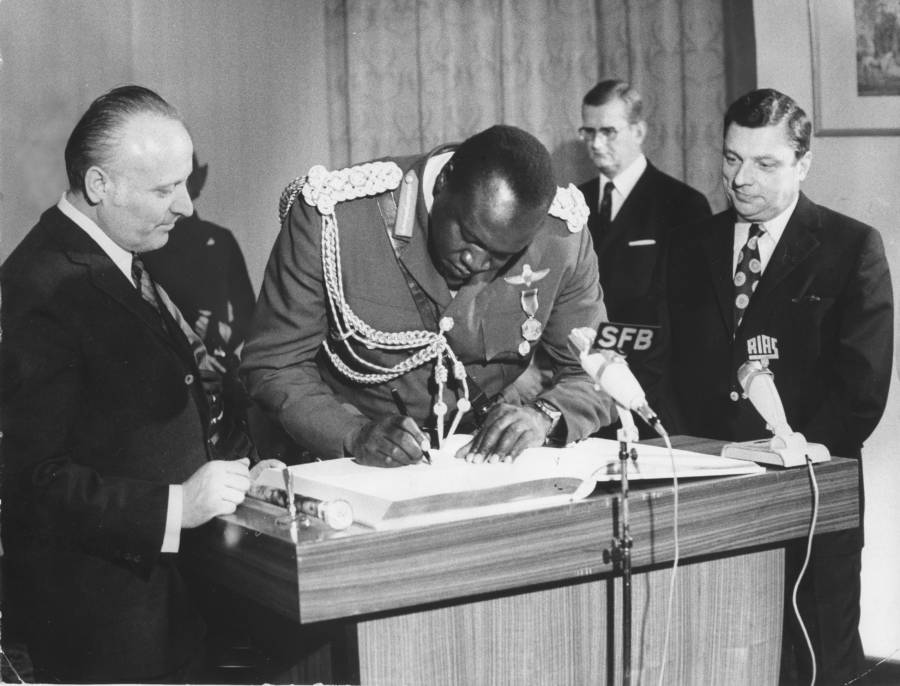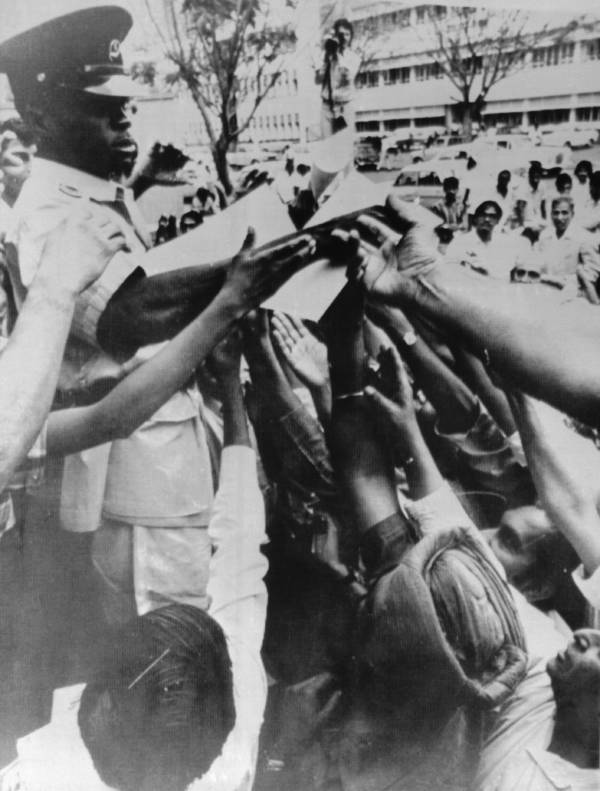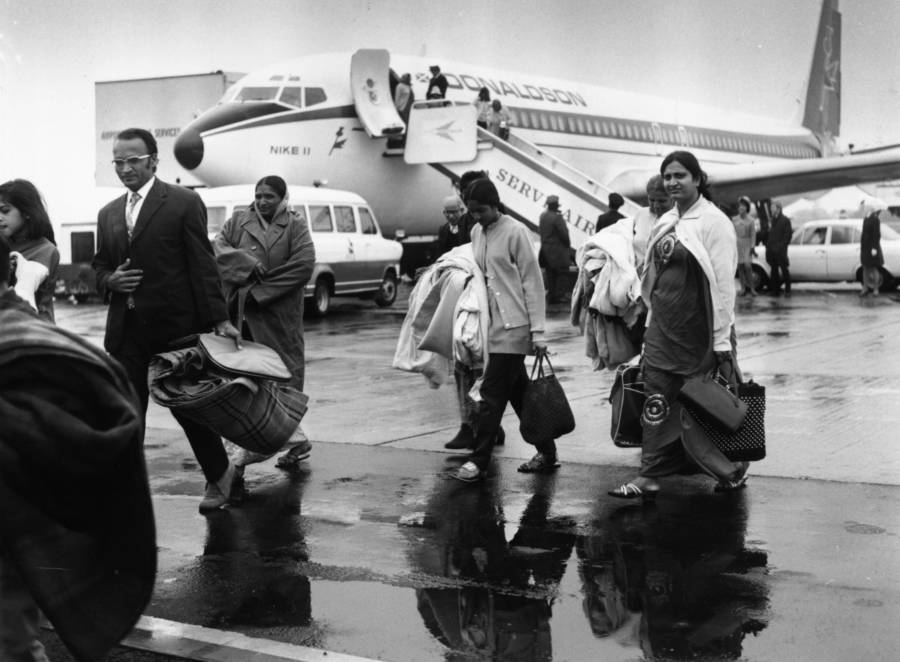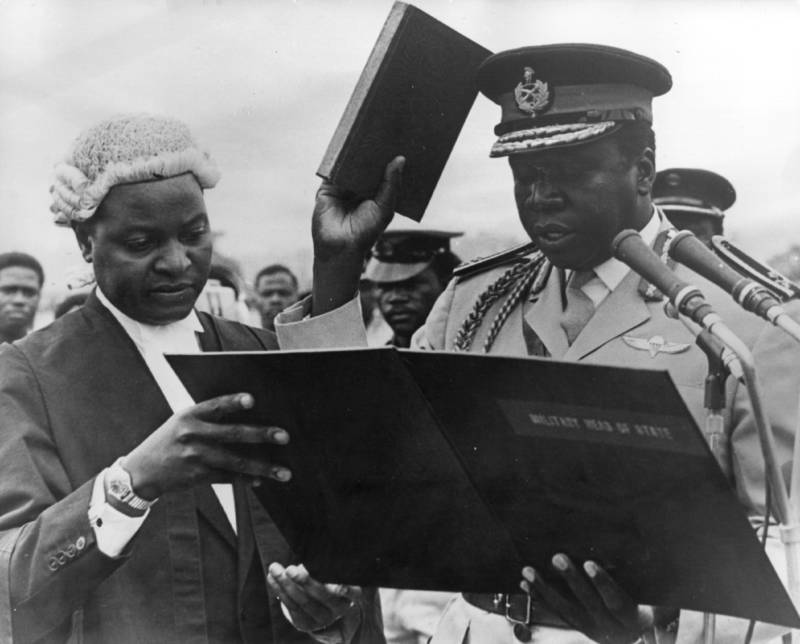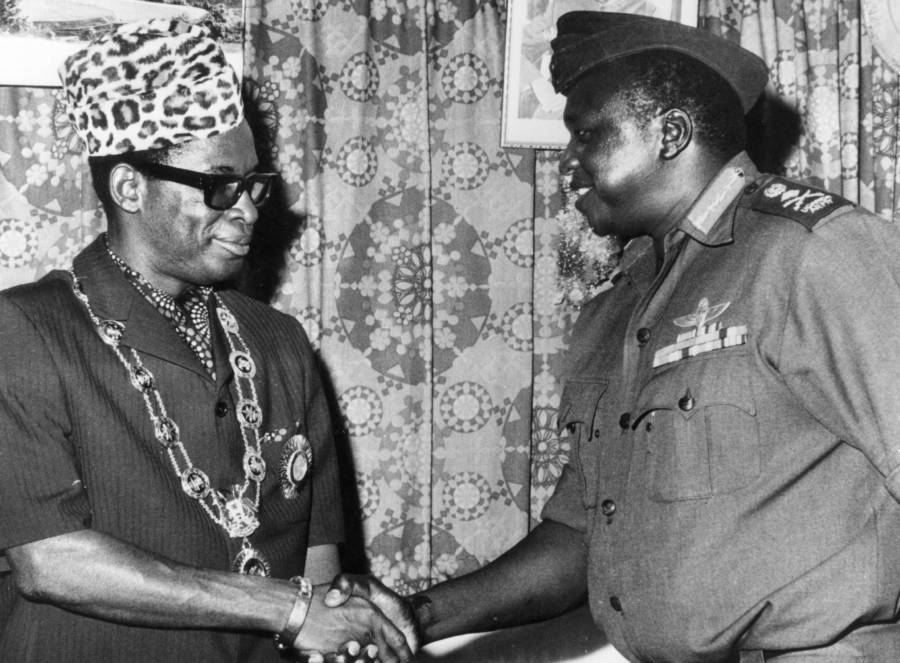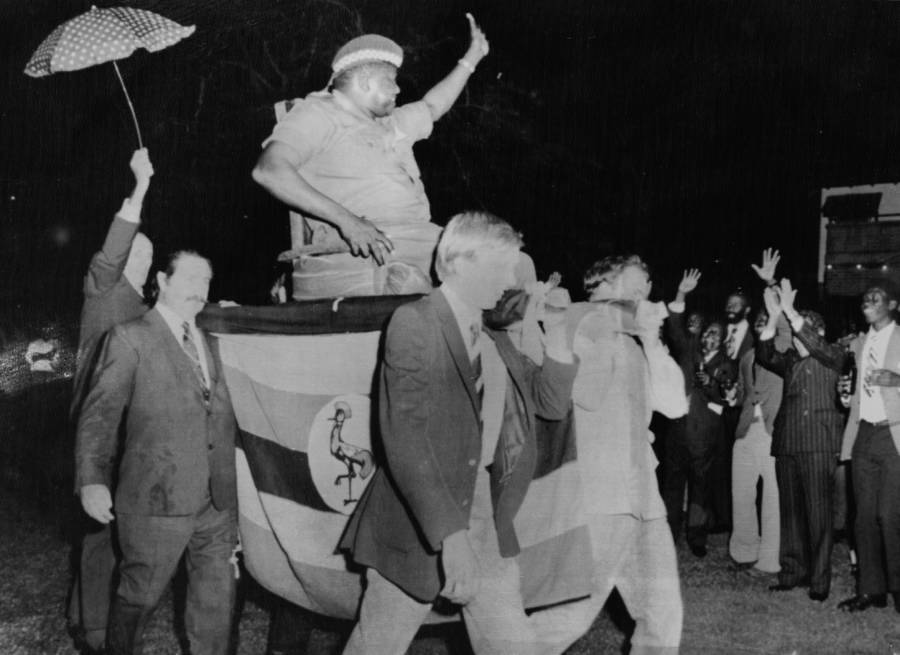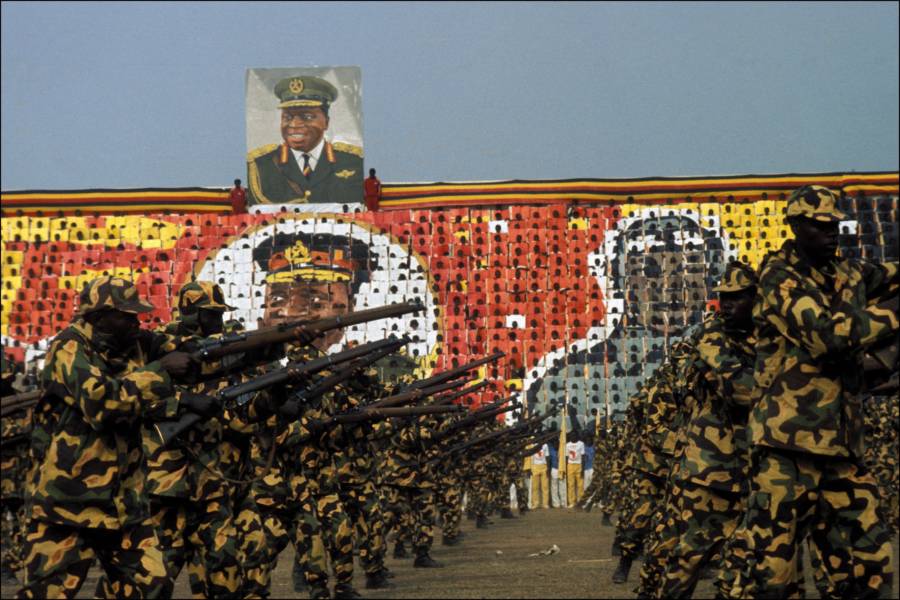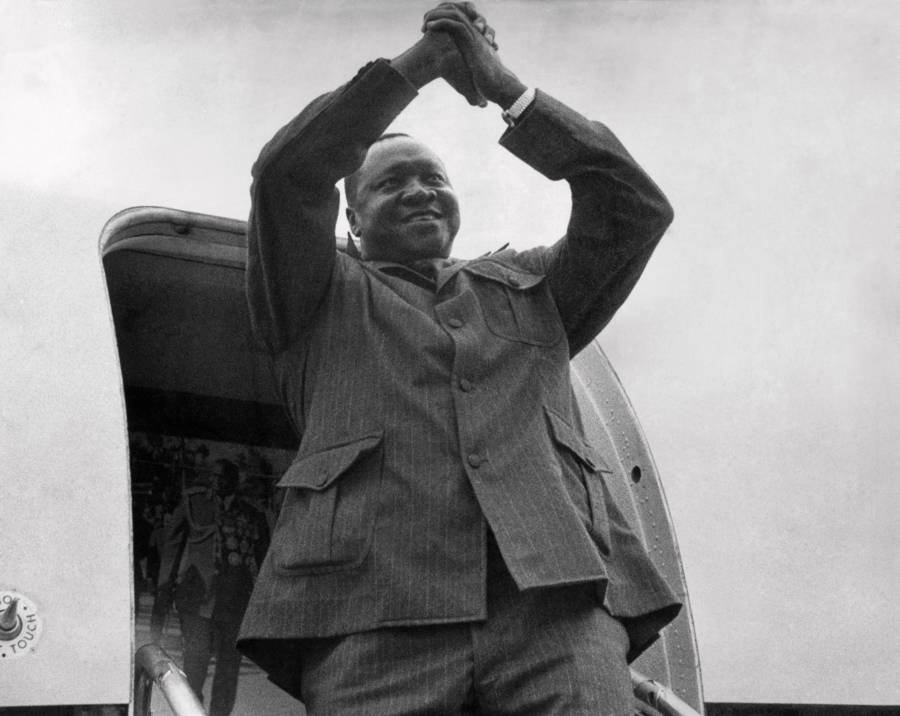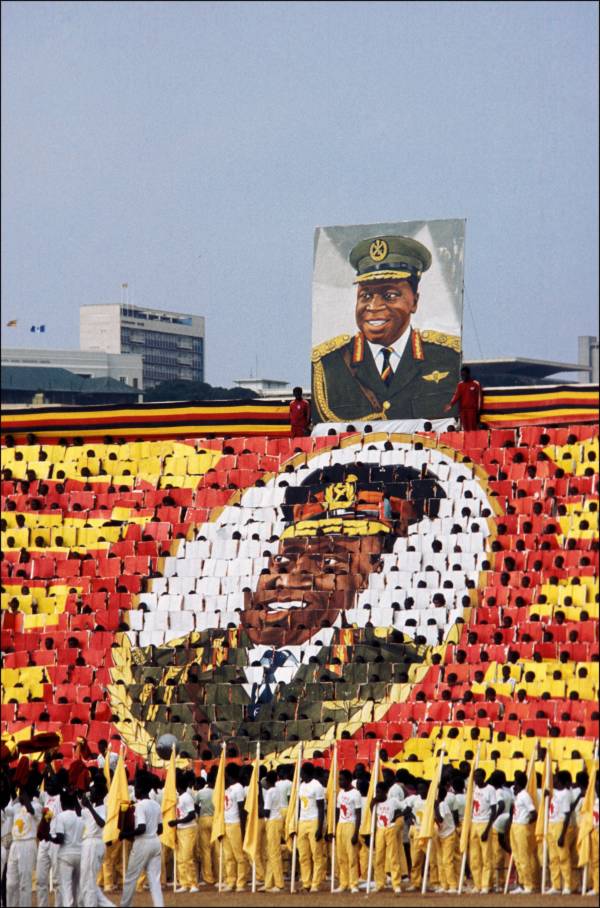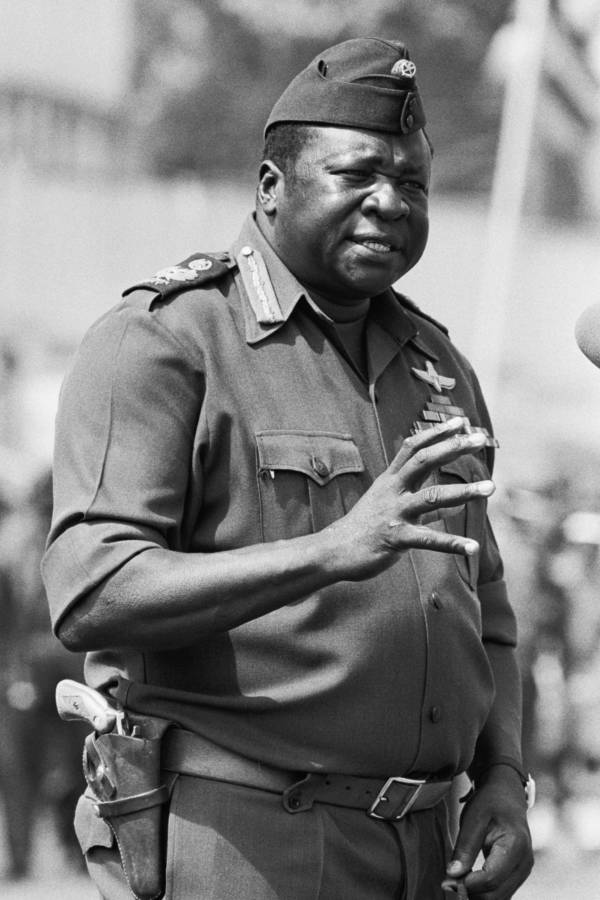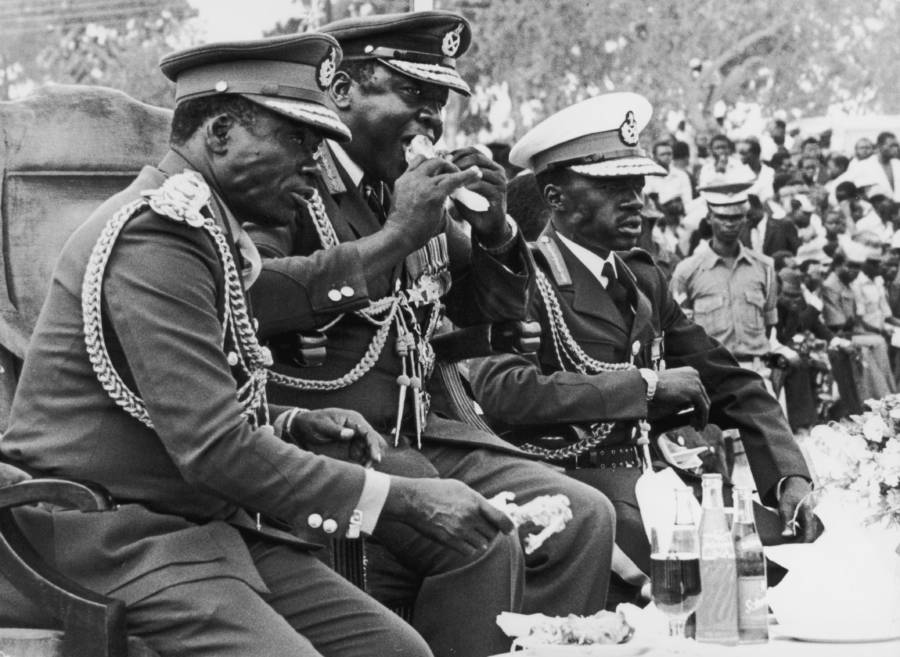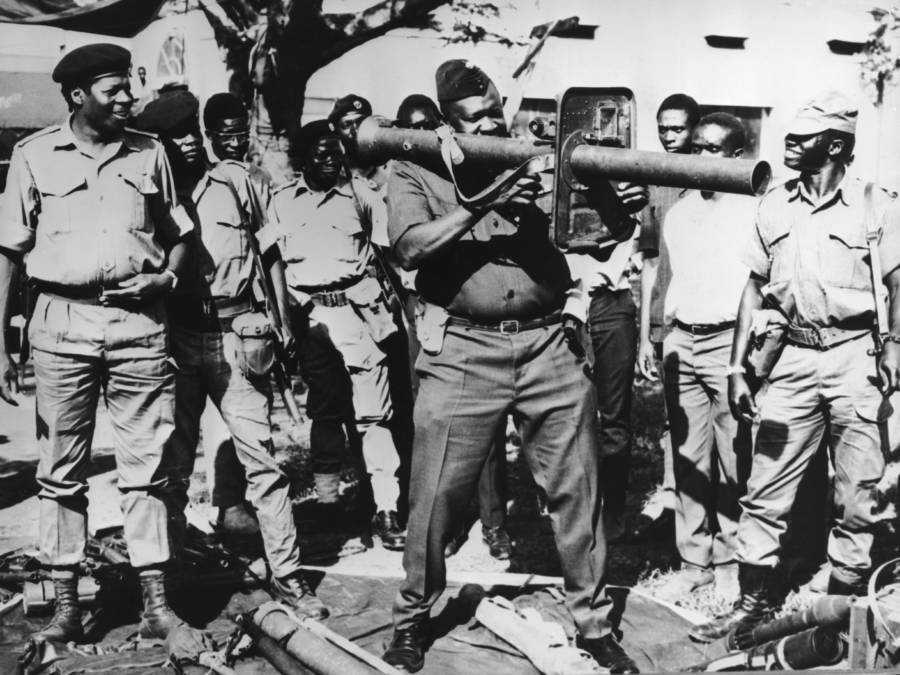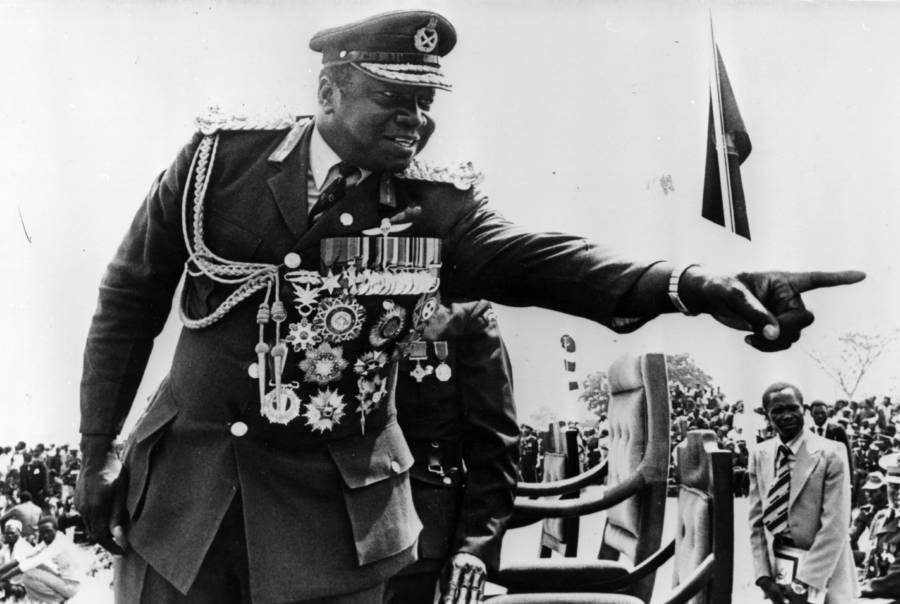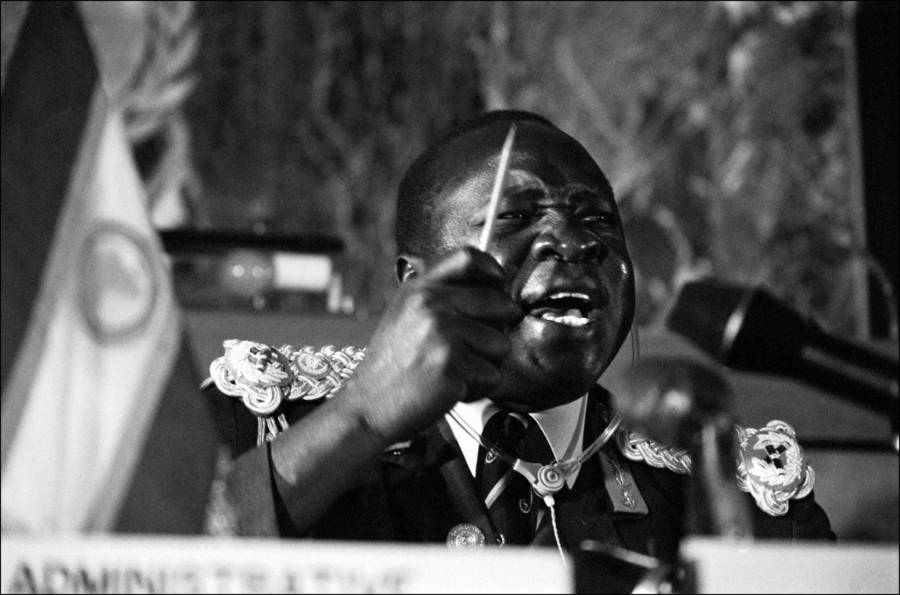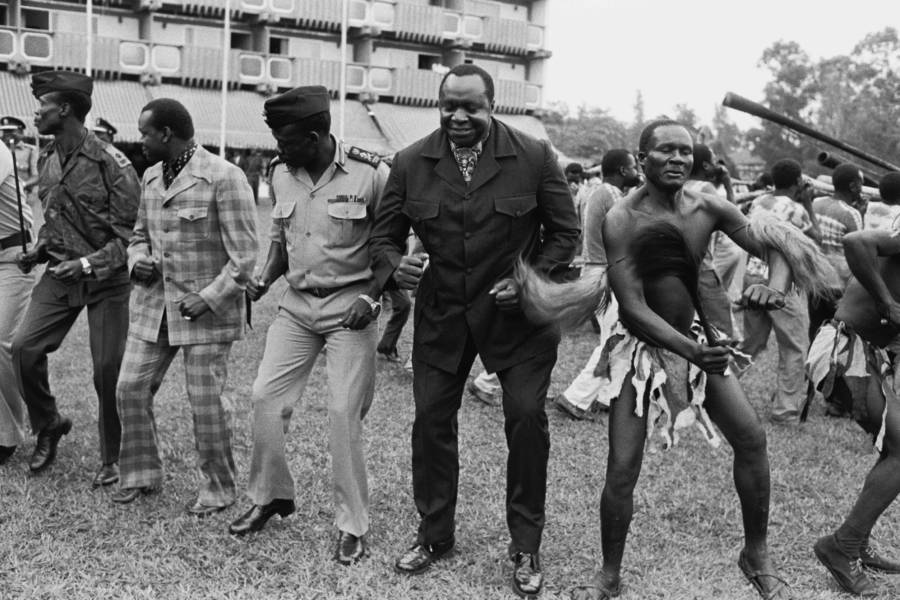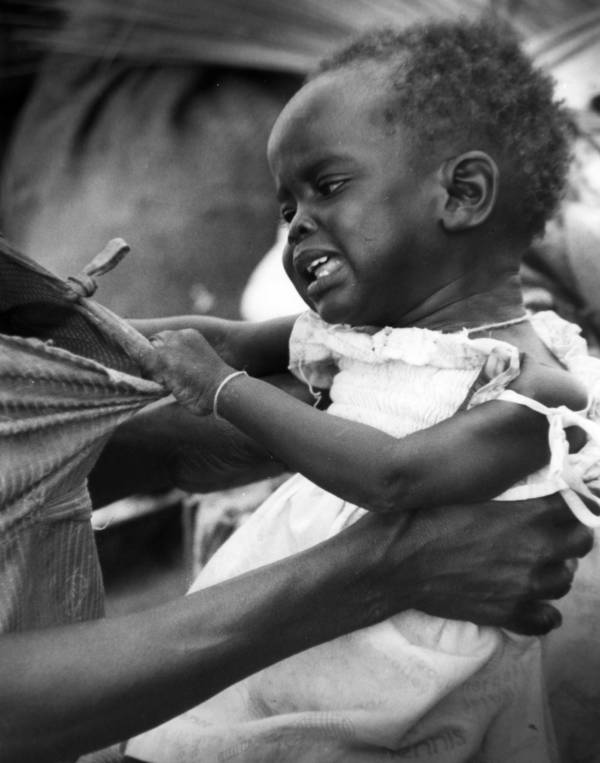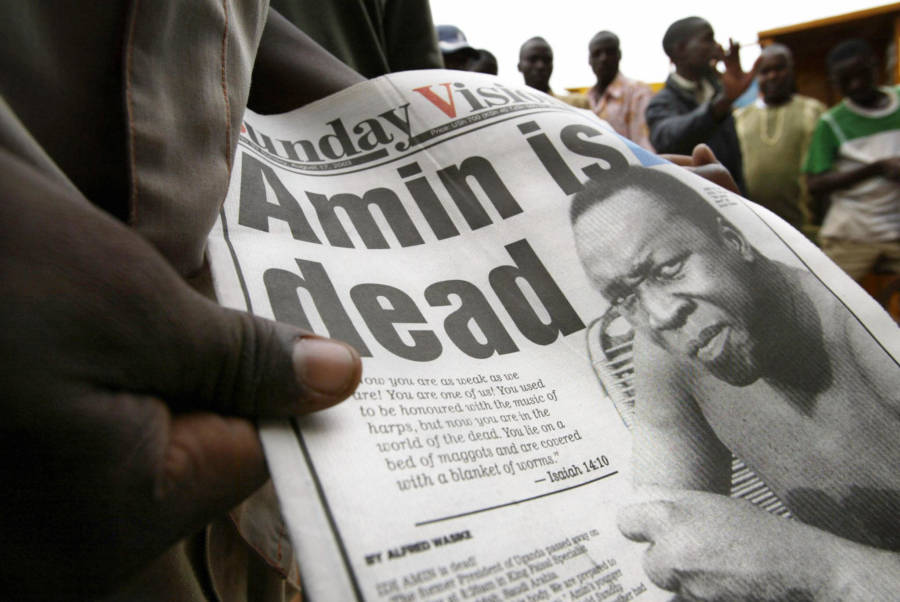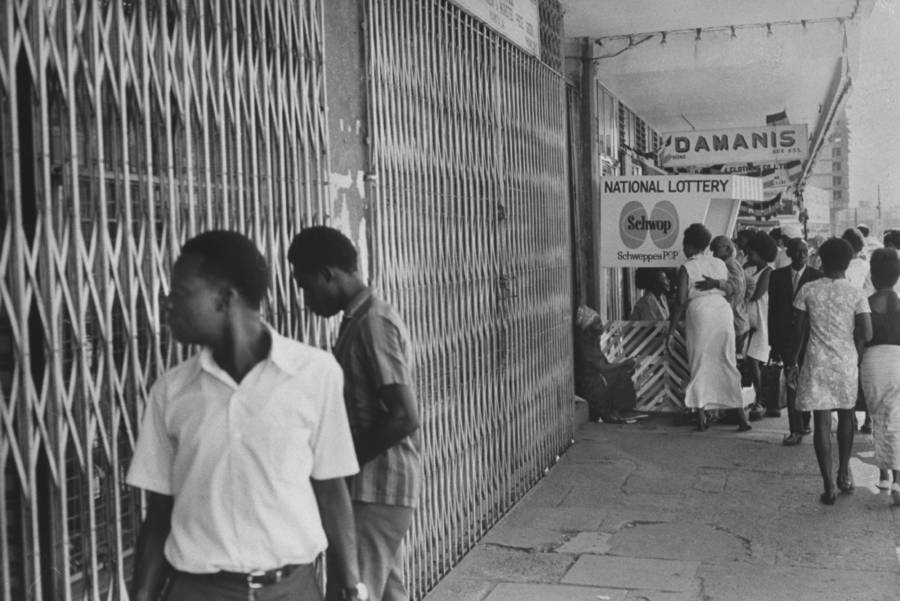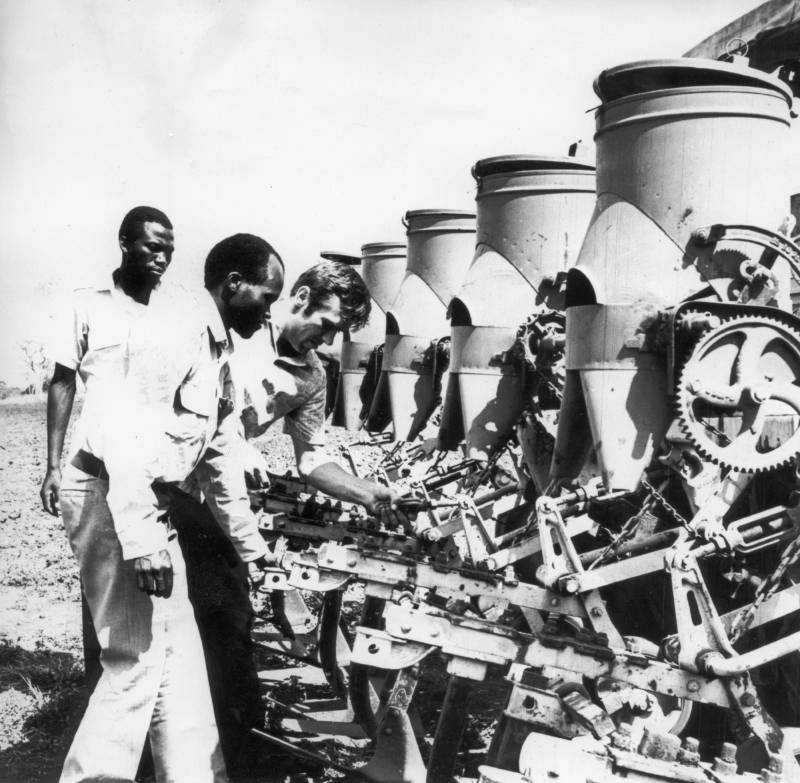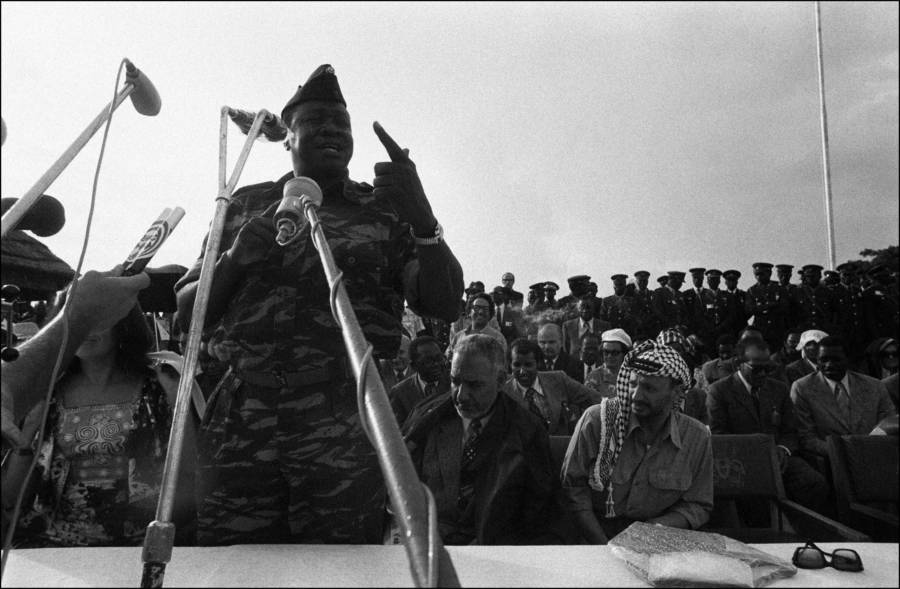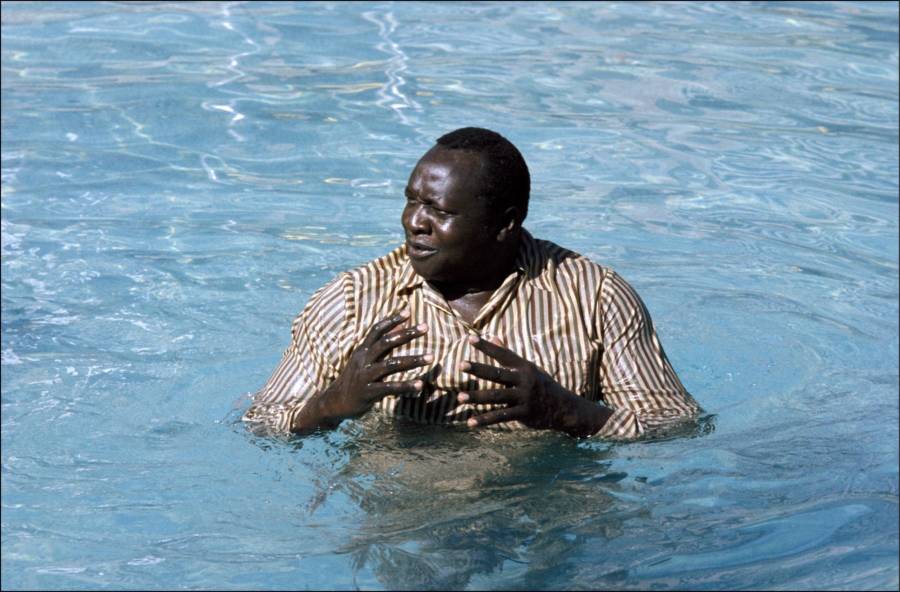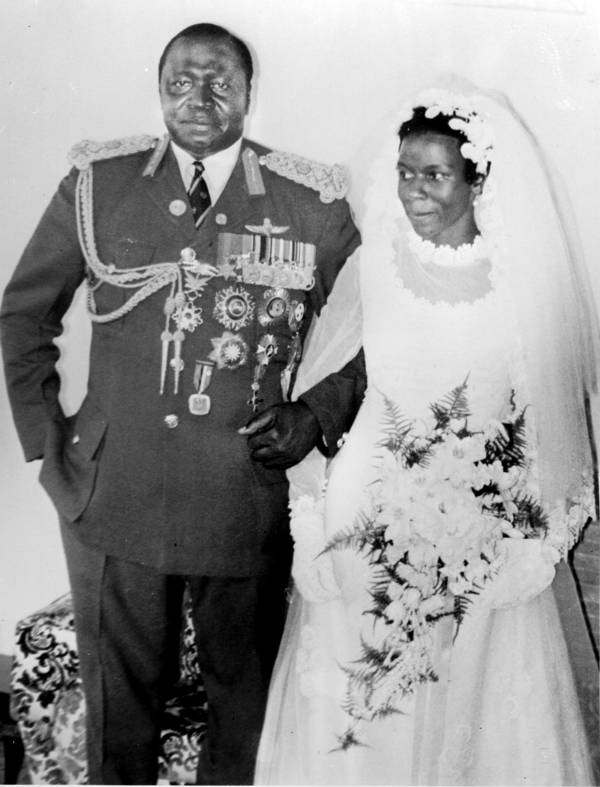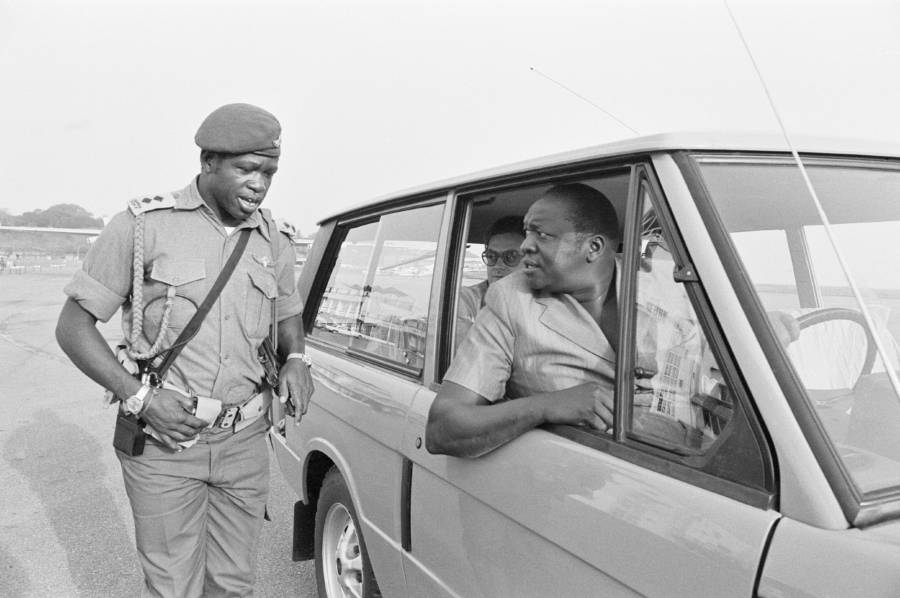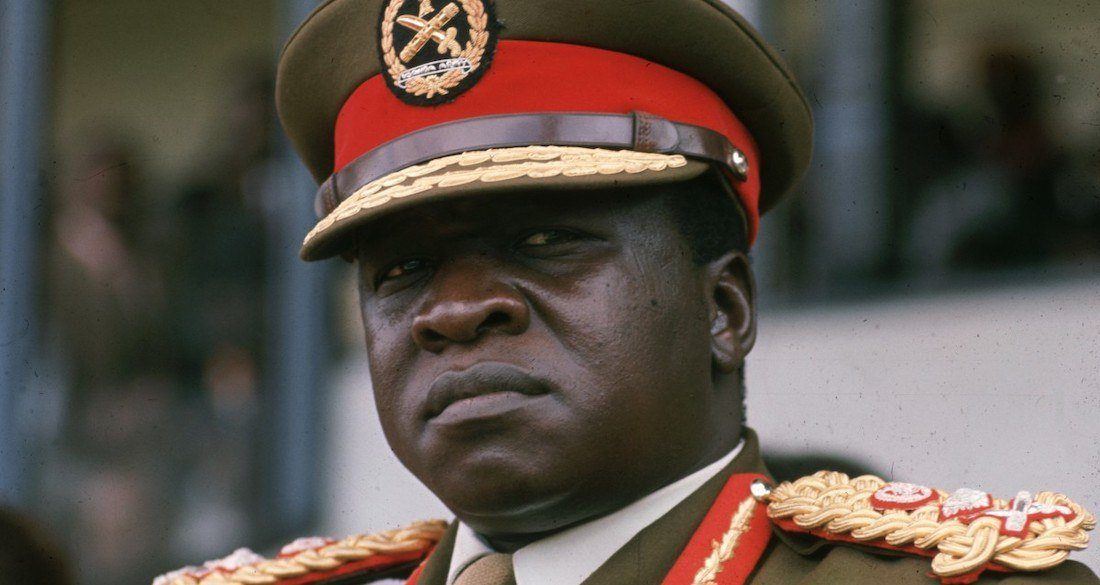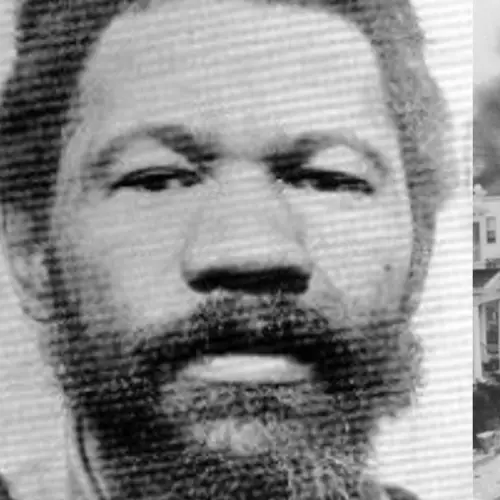From 1971 to 1979, Idi Amin Dada ruled Uganda with an iron fist — and may have killed upwards of 500,000 people.
He was known for his smile, but military dictator Idi Amin Dada ruled Uganda with an iron fist for eight long years. Those who celebrated the general's military coup that overthrew President Milton Obote in 1971 had no idea how violent and tyrannical the next decade would be.
By the end of his rule, Amin had ordered the killings of an estimated 300,000 people (some estimates peg the number as high as 500,000) out of a population of 12 million.
Even though Amin — also known as the "Butcher of Uganda" — oversaw mass killings and extraordinary human rights violations, many Ugandans still cherish his legacy to this day. This speaks volumes of his success in fostering the image of a liberator — a man of the people ridding their homeland of its imperialist past.
Idi Amin's story isn't fully encapsulated between the years of 1971 and 1979, though. In order to gain a semblance of understanding of the man's psyche, we have to start at the beginning.

Wikimedia CommonsIdi Amin Dada at Entebbe Airport, welcoming Vice President John Babiiha in 1966.
Idi Amin Dada's Youth
Idi Amin was born Idi Amin Dada Oumee in Uganda's northwest, near the borders of Sudan and Congo. His exact birth date is unknown, but most researchers believe he was born around the year 1925.
Amin's father was a farmer and a member of the Kakwa — a tribe indigenous to Uganda, Congo, and Sudan — while his mother was of the Lugbara people. Both tribes fall under the umbrella of what Ugandans call "Nubian," and it's with the Nubians that Amin's loyalty would lie throughout his life.
Amin's parents separated when he was very little, and he and his mother moved to the city. Amin enrolled into a Muslim school, but he left shortly thereafter, only ever reaching the fourth grade.
With an imposing height of 6 feet 4 inches, the ability to speak the local Kiswahili language, and lack of education, Amin was the perfect person for the British colonial powers to mold into an obedient soldier.
So, as a young adult, he worked hard to garner the martial qualifications valued by the British, which had ruled Uganda since 1894. After enlisting in the army in 1946, Amin successfully stood out from his peers by focusing on his strong suit: athletics.
The young private was an impressive swimmer, rugby player, and boxer. As an amateur, Idi Amin won the Uganda light heavyweight boxing championship in 1951 and held that title for nine straight years. Meanwhile, in 1949, Amin was promoted from private to corporal. It was the first of his many notable steps up the ladder of power.
Idi Amin's Military Experience
Though Idi Amin would later use anti-imperialist sentiment to inspire public support, the early 1950s were a different time. Here, Amin would act in the opposite manner, helping the British maintain control of its African protectorates by fighting against the Mau Mau African freedom fighters in Kenya and rebel fighters in Somalia.
He quickly began to garner a reputation as a ruthless soldier and steadily rose through the military ranks. In 1957, he was promoted to sergeant major and commanded his own platoon.
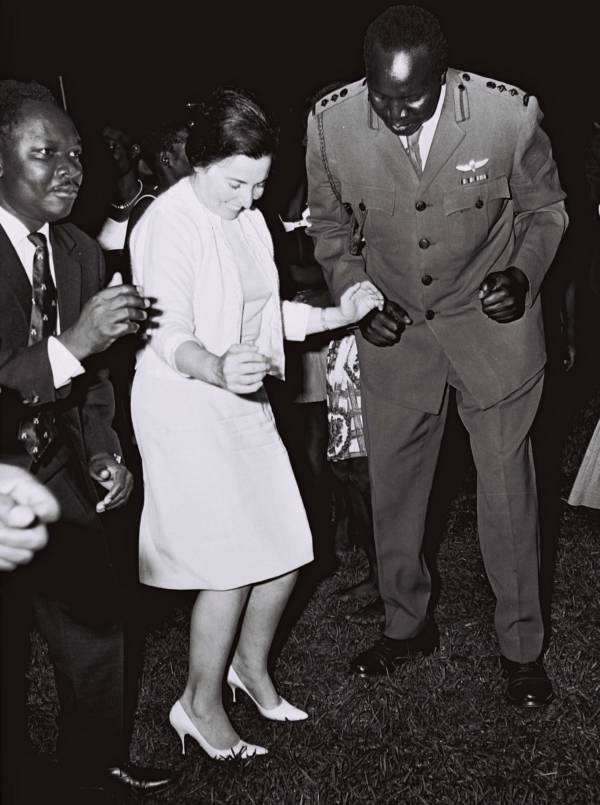
Wikimedia CommonsIdi Amin presents his lighter side to Miriam Eshkol, wife of Israeli Prime Minister Levi Eshkol, with a tribal dance during a party for the latter at Jinja Military Camp. June 13, 1966.
Two years later, Amin was given the rank of "effendi," the highest rank available to native-born soldiers in Uganda. By 1962, Amin had the highest rank of any African in the military.
Idi Amin And Milton Obote
Despite his increasing military clout, Idi Amin Dada soon got in trouble for his ruthless ways. In 1962, after a simple assignment to root out cattle-stealers, it was reported that Amin and his men had committed brutal atrocities.
British authorities in Nairobi exhumed the bodies and found that the victims had been tortured and beaten to death. Some had been buried alive.
Since Amin was one of only two high-ranking African officers — and Uganda was nearing its Oct. 9, 1962 independence from Britain — Obote and British officials decided not to prosecute Amin. Instead, Obote promoted him and sent him to the U.K. for further military training.
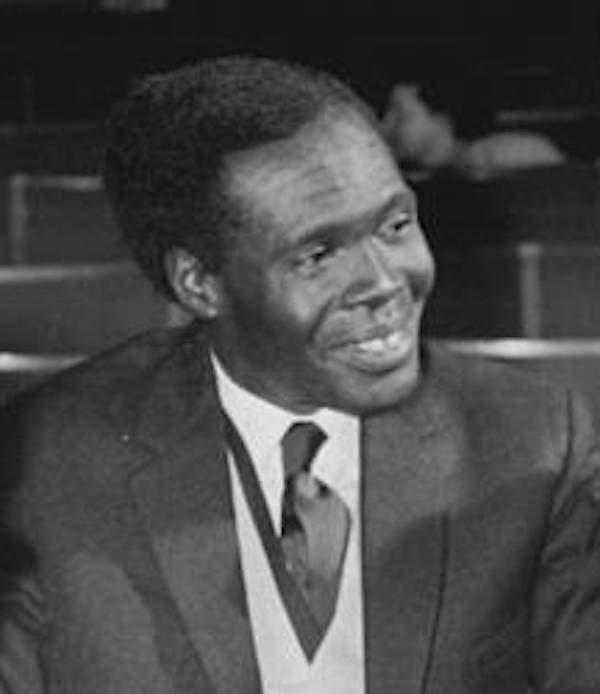
Wikimedia CommonsMilton Obote stopped trusting Idi Amin after the latter failed to kill King Metusa II.
More importantly, according to History, Amin and prime minister Obote formed a lucrative alliance in 1964, rooted in an expansion of the Ugandan Army and various smuggling operations.
Understandably, Obote's abuse of power upset other Ugandan leaders. Most notably, King Metusa II of Buganda, one of Uganda's precolonial kingdoms, asked for a thorough inquiry into the prime minister's dealings. Obote responded by putting in place his own commission that essentially let him off the hook.
Milton Obote's Right Hand Man

Wikimedia CommonsIdi Amin welcomes Israeli Prime Minister Levi Eshkol, 1966. A few years later, he'd expel Uganda's Israeli citizenry out of frustration from a failed arms deal.
Meanwhile, Obote further promoted Amin to major in 1963 and to colonel in 1964. In 1966, the Ugandan Parliament charged Amin with misappropriating $350,000 worth of gold and ivory from guerrillas in the Congo he was supposed to supply with arms.
In response, Amin's forces arrested the five ministers who raised the issue and Obote suspended the constitution, appointing himself president.
Two days later, Amin was put in charge of Uganda's entire military and police force. Two months later, Obote sent tanks to attack the palace of Mutesa II, the king of the Baganda tribe, with whom he shared power. The king fled the country, leaving Obote in charge of the government and Amin in charge of the government's muscle.
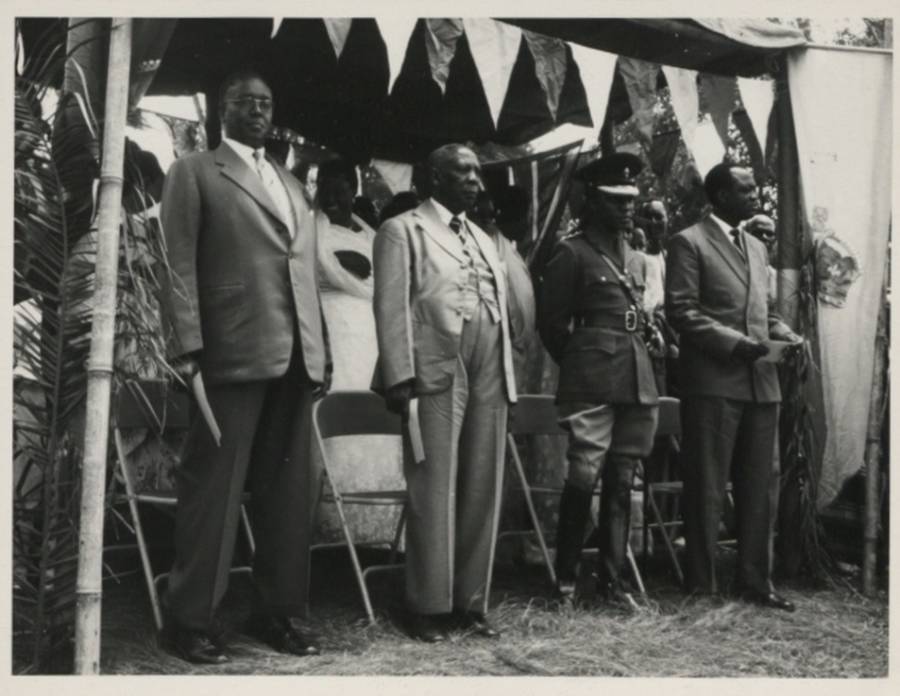
Wikimedia CommonsFrom left to right: The Omugabe of Ankole, Omukama of Bunyoro, the Kabaka of Buganda (King Metusa II), and Won Nyaci of Lango. At the signing of an agreement between Uganda's kings and British governor Sir Frederick Crawford. Ca. 1957-1961.
Amin ultimately seized control with a military coup on Jan. 25, 1971, while Obote was flying back from a conference in Singapore. In an ironic twist of fate, Obote was forced into exile by the same man he empowered. He wouldn't return until after Idi Amin's terrifying reign.
Idi Amin: Man Of The People?
Ugandans were generally enthusiastic about Amin taking control. To them, the new president wasn't merely a military leader, but a charismatic man of the people. People danced in the streets.
He wasted no opportunity to shake hands, pose for pictures, and dance the traditional dances with commoners. His informal personality made it seem like he really cared about the country.
Even Amin's multiple marriages helped — his spouses were of various Ugandan ethnic groups. In addition to his six wives, it is alleged that he had a minimum of 30 mistresses around the country.
But the biggest boost to his popularity came when he allowed King Mutesa's body to return to Uganda for burial in his homeland, abolished Obote's secret police, and granted amnesty to political prisoners. Unfortunately, Amin was not the benevolent ruler he appeared to me.
Idi Amin's Brutal Reign
In the shadows, Idi Amin Dada was busy creating his own "killer squads," tasked with killing soldiers suspected of being loyal to Obote. These squads brutally murdered a total of 5,000-6,000 soldiers from the Acholi, Langi, and other tribes, right in their barracks. These tribes were thought to be loyal to the ousted president, Milton Obote.
To some, it quickly became apparent that Amin's man-of-the-people persona was no more than a front to hide his true inclinations. He was ruthless, vindictive, and used his military clout to further his goals.
His inability to deal with political matters in a civil manner was further highlighted in 1972, when he asked Israel for money and arms to help fight Tanzania. When Israel refused his request, he turned to Libyan dictator Muammar Gaddafi, who promised to give him what he wanted.
Amin then ordered the expulsion of 500 Israelis and 50,000 South Asians with British citizenship. As Israel had undertaken several large building projects, and Uganda's Asian population consisted of many successful plantation and business owners, the expulsions led to a dramatic economic downturn in Uganda.
All of these developments soured Amin's international image. But he didn't seem to care.
A Brutal Military Dictatorship
By the mid-1970s, the Ugandan dictator grew increasingly erratic, repressive, and corrupt. He routinely changed his personnel, altered travel schedules and modes of transportation, and slept in different places whenever he could.
Meanwhile, to keep his troops loyal, Amin showered them with expensive electronics, whiskey, promotions, and fast cars. He also handed over businesses previously owned by Uganda's Asian population to his supporters.
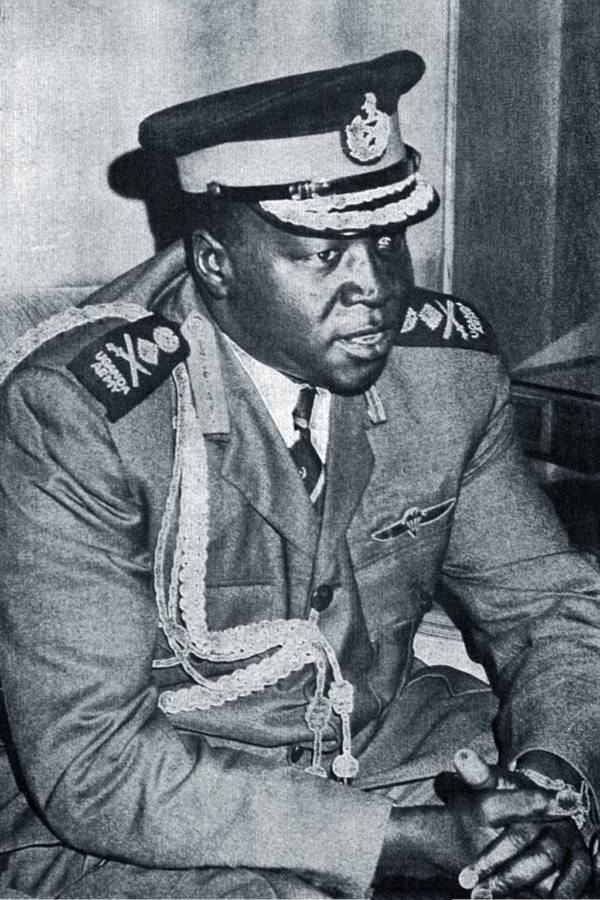
Wikimedia CommonsIdi Amin in full regalia in 1973.
More importantly, Amin continued to oversee the murder of an increasing number of his countrymen. Tens of thousands of Ugandans continued to be violently killed on ethnic, political, and financial grounds.
His methods of murder became increasingly sadistic. Rumors spread that he kept human heads in his refrigerator. He reportedly ordered 4,000 disabled people to be thrown into the Nile to be torn apart by crocodiles. And he confessed to cannibalism on several occasions: "I have eaten human meat," he said in 1976. "It is very salty, even more salty than leopard meat."
By this point, Amin was using the majority of national funds for the armed forces and his own personal expenses — a classic tenet of 20th century military dictatorships.
Some attributed Amin's cruelty to dizzying effects of absolute power. Others believed his reign coincided with late-stage syphilis. In his early military days, he was charged with failing to treat an STD, and in the mid-1970s an Israeli doctor who had served in Uganda told a Tel Aviv newspaper, "It's no secret that Amin is suffering from the advanced stages of syphilis, which has caused brain damage."
Despite his brutal rule, the Organization of African Unity elected Amin chairman in 1975. His senior officers promoted him to field marshal, and in 1977 African nations blocked a United Nations resolution that would have held him accountable for human rights violations.
The Entebbe Airport Raid
In June 1976, Idi Amin made one of his most infamous decisions by aiding Palestinian and leftists militants who hijacked an Air France flight from Tel Aviv to Paris.
A strong critic of Israel, he allowed the terrorists to land in Entebbe airport in Uganda and provided them with troops and supplies as they held 246 passengers and 12 crew members hostage.
But instead of giving up, Israel sent a team of elite commandos to rescue the hostages in a surprise attack on Entebbe airport during the night of July 3.
In what turned out to be one of the most daring and successful rescue missions in history, 101 of 105 remaining hostages were liberated. Only one Israeli soldier lost his life during the operation, while all seven hijackers and 20 Ugandan soldiers were killed.
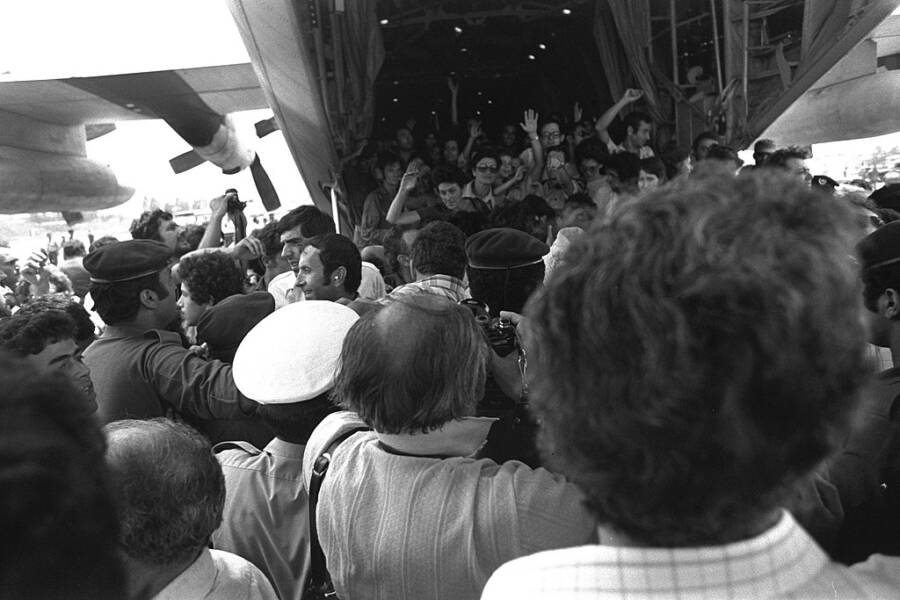
Rescued Jewish passengers being welcomed back home after Operation Entebbe.
After an embarrassing turn of events, Amin ordered the execution of one of the hostages, a 74-year-old British-Israeli woman who had fallen ill during the hostage crisis and was being treated in a Uganda hospital.
British documents released in 2017 revealed that the woman, Dora Bloch, was "dragged" from her hospital bed "screaming," shot to death, and dumped into the trunk of a government car. The body of a white woman was later found on a sugar plantation 19 miles away, but the body was too burnt and disfigured to identify.
Amin's senseless retaliation further worsened his international image and highlighted his increasingly erratic behavior.
Idi Amin's Circle Of Supporters Grows Thin
By the late 1970s, Amin ramped up his destructive methods even further. In 1977, he ordered the killings of notable Ugandans such as Archbishop Janani Luwum and Interior Minister Charles Oboth Ofumbi.
Then, when the British severed all diplomatic ties with Uganda in the aftermath of the Entebbe incident, Amin proclaimed himself the "Conqueror of the British Empire."
The ridiculous title was just one more addition to the dictator's god-like description of himself:
"His Excellency President for Life, Field Marshal Al Hadji Doctor Idi Amin, VC, DSO, MC, CBE, Lord of all the Beasts of the Earth and Fishes of the Sea, and Conqueror of the British Empire in Africa in General and Uganda in Particular."
But his title couldn't save him from a deteriorating economy: Prices for coffee, Uganda's main export, plummeted in the 1970s. In 1978, the U.S. — which accounted for one-third of Uganda's coffee exports — stopped trading with Uganda altogether.
With a deteriorating economy and popular opposition to his rule, Amin's hold on power was growing increasingly weak. By this point, many Ugandans had fled to the U.K. and other African countries, while many of his troops had mutinied and fled to Tanzania.
Desperate to stay in power, Amin used the last option he had. In October 1978, he ordered the invasion of Tanzania, claiming they had instigated unrest in Uganda.
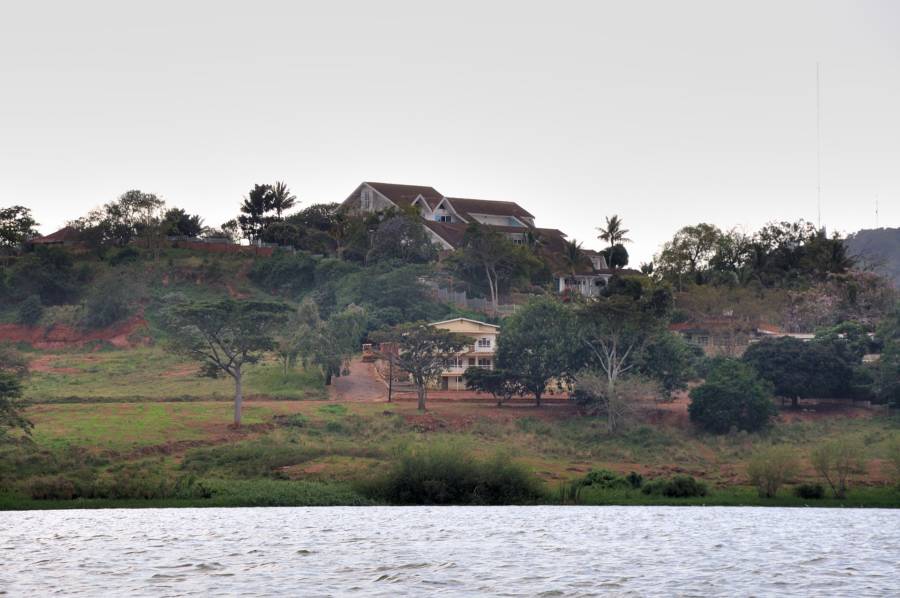
Wikimedia CommonsIdi Amin Dada's former palace in Lake Victoria, Uganda. The tyrant owned numerous luxury homes and vehicles, using state funds to enrich himself.
In an unexpected turn of events for the despot, Tanzanian forces not only fought off the attack but invaded Uganda. On April 11, 1979, Tanzanian and exiled Ugandan soldiers captured Uganda's capital, Kampala, overthrowing Amin's regime.
Life In Exile
Given his connections with Qaddafi, Idi Amin at first fled to Libya, taking his four wives and more than 30 children along with him. Eventually, they moved to Jeddah, Saudi Arabia. He remained there until 1989 when he used a fake passport to fly to Kinshasa (a city in what was then Zaire and now is the Democratic Republic of the Congo).
Idi Amin died on August 16, 2003, after multiple organ failure. His family disconnected him from life support.
Three years later, his character was famously captured by actor Forest Whitaker in an Oscar-winning performance in the 2006 film, The Last King of Scotland (so named because Amin claimed to be Scotland's uncrowned king).
In the end, the brutal dictator brought economic ruin, social unrest, and oversaw the murders of up to half a million people. There's no denying that his nickname "The Butcher of Uganda" was well-earned.
After learning about the horrors of Idi Amin Dada's regime, have a look at Ellis Island photos that captured American diversity. Next, check out photos of Chernobyl today after being frozen in time by nuclear disaster.
